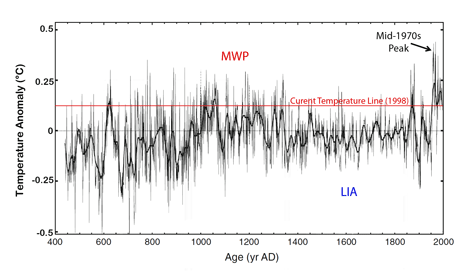Reference
Loso, M.G. 2009. Summer temperatures during the Medieval Warm Period and Little Ice Age inferred from varved proglacial lake sediments in southern Alaska. Journal of Paleolimnology 41: 117-128.
Description
Eleven outcrops of exposed lacustrine stratigraphy revealing continuous sediment deposition at southern Alaska's Iceberg Lake (60°47'N, 142°57'W) from AD 442 to 1998 were examined, photographed and sampled (for grain size, bulk density, organic-matter content, and for 14C and 137Cs dating), after which the authors developed a quantitative relationship between varve thickness and melt-season temperature that they used to construct a melt-season temperature history of the region. This work revealed a "strong steady pulse of medieval warming" between AD 1000 and 1100 that "overlaps with warming seen at other Alaskan sites," and it suggests that some of the later 20th-century temperature spikes were "slightly (0.1°C) warmer than the warmest part of the Medieval Warm Period." It should be noted, however, that the most recent temperature of the record (1998) is actually about 0.1°C cooler than the peak MWP temperature.





